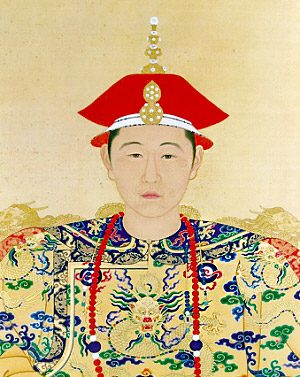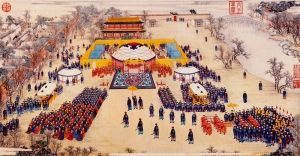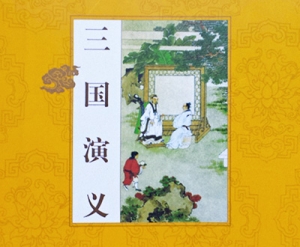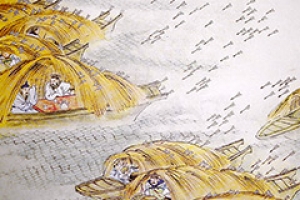The Emperor Ascends: The Story of the Illustrious Kangxi

Portrait of young Emperor Kangxi.
Emperor Kangxi once wrote: “What man am I, that among all those who have reigned… it should be I who reigned the longest?”
During the mid-17th century, Kangxi ruled the Middle Kingdom for 61 years. In Chinese civilization's 5,000 years, not only did he serve as the emperor the longest, but he’s also memorialized as one of the wisest, most magnanimous, and accomplished of all emperors.
Kangxi was the fourth emperor of the Qing Dynasty (1644-1911). Qing rulers were not ethnically Han Chinese. They were Manchurian tribal peoples from north of the Great Wall. They had united, advanced south, and replaced China’s previous dynasty, the Ming, during its disintegration.
Kangxi’s brilliant legacy lies in re-unifying this vast empire both politically and socially, consolidating Qing Dynastic rule, and contributing a plethora of cultural and economic developments.
All of this, however, was almost not to be, because when he first took the throne as a child, Kangxi’s reign nearly ended before it began.
Adverse Beginnings
During the Qing’s early years, the empire was still in disarray. On top of turmoil from the recent wars that led to the dynastic turnover, there were also leftover insurgencies and a large portion of Chinese remained apprehensive of their new foreign leaders.
The Qing was officially established in 1644 and Kangxi was born 10 years later. When he was only 8, his father died of smallpox. In his final edict, the emperor pronounced four of his closest advisors to serve as a council of regents for his young son. They were to assist the boy in managing the affairs of the state until he reached maturity.
These senior officials were non-imperial princes who had served Qing emperors with loyalty and merit. But with the turn of events, one power-hungry official saw his chance to pounce on the throne.
Enter Aobai
Aobai (Gūwalgiya Oboi in Manchurian) was a decorated general from an elite Manchu clan. Unfortunately, his prowess on the battlefield was coupled with a dictatorial nature. Aobai squashed everyone in his path and became the most powerful figure in the imperial court. He made many enemies, and almost no one dared to stand up to him.
As for the young emperor, Aobai scoffed at him. After all, the general had fought and won many a bloody war decades before this whippersnapper was even born; he could count more battle scars on his body than Kangxi could count achievements. Aobai assumed that Kangxi would be a mere marionette for his own maneuvers.
Kangxi grew up under this tyranny. He watched quietly and bided his time. When Kangxi turned 14, the age of adulthood for Manchurians, he officially ascended the throne. He was now on a collision course with Aobai.
The Emperor’s Robes
As domineering as ever, Aobai squeezed members of his political faction into powerful positions throughout the government, victimized countless people who were against him, disregarded state interests in pursuit of his own, and more than disrespected the emperor.
Aobai even dared to make his own set of yellow imperial dragon robes— symbolic garbs only the emperor can wear. This was high treason!
One day, just as Aobai was trying on his new robes and admiring his image as emperor, a visitor suddenly appeared at his mansion. It was a royal emissary delivering the latest imperial edict: the official announcement that Kangxi had now fully ascended the throne as a bona fide emperor. When this official noticed Aobai’s audacious dress, he was shocked and ordered the royal guards to move in. But these men were no match for Aobai, who hurled them aside like rag dolls, and set off to make a stand.
The emissary raced back to the palace ahead of Aobai. Just as he was reporting the offense, the despotic general arrived on the scene. He made his rounds, intimidating and insulting everyone from the officials to the emperor. Aobai’s blustering made it clear that he thought nothing of Kangxi, crown or no crown, and would continue to do as he pleased. Then he strutted off, smugly assured that he still had the entire palace under his thumb. This time, however, the teenage Kangxi was ready to take him down.
The Grand Finale
Kangxi had long known that Aobai was a festering menace to both his rightful rule and the future of the dynasty. That’s why, years before, he had gathered a group of young Manchu royals around himself. Aobai took them as childish, unambitious, and hardly significant. But Kangxi had actually selected the brightest and strongest. And what Aobai had always dismissed as boyish sport, had in fact been Kangxi’s training them for their ultimate showdown.
This is how it played out: In the spring of 1669, the young emperor summons the increasingly aggressive Aobai to court. Aobai saunters in, ever confident and wholly unaware. Before he knows it, he is slapped with 30 serious criminal charges and surrounded by Kangxi’s young retainers. Furious yet desperate, Aobai pulls out his dagger (failing to disarm before entering the emperor’s presence is another capital offense) and goes right after the emperor. He puts up a good fight, but Kangxi’s young men are strong and many. After a fierce struggle, Aobai is pinned down, once and for all.
A Glorious Reign Begins
This difficult episode in his early years showed Kangxi’s extraordinary courage, foresight, and resolve. The young emperor proved himself an intelligent, tactical, and worthy emperor.
In the half century that followed, Kangxi served his country indefatigably. He stabilized the dynasty, pacified inner rebellions and foreign contenders, and greatly expanded China’s borders west and north. Under his benevolent rule, the empire prospered.
Kangxi also had an immense passion for learning. Throughout his life, he continuously pursued and promoted ancient Chinese teachings, calligraphy, poetry, and music. He made tremendous advancements in geography, science, engineering, mathematics, and astronomy. He commissioned numerous compilations of records, maps, histories, and literature, as well as encyclopedic works like the Kangxi Dictionary.
Emperor Kangxi ushered in a glorious age in late imperial China. Throughout Chinese history, the position of emperor came with the title Son of Heaven. Kangxi's longevity on the throne was thus taken as a sign of approval from above.
Shen Yun’s 2016 classical Chinese dance story Defending the Throne tells the story of the showdown between the young Kangxi and Aobai.
January 25, 2016





